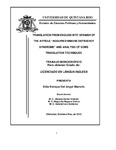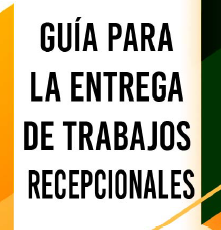Mostrar el registro sencillo del ítem
Translation from english into spanish of the article "acquired immune deficiency syndrome" and analysis of some translation techniques.
| dc.contributor.author | Del Angel Marrufo, Edie Enrique | |
| dc.contributor.other | Negrete Cetina, Magnolia | |
| dc.contributor.other | Lira Gutierrez, Gabriel | |
| dc.date.accessioned | 2023-11-15T20:34:27Z | |
| dc.date.available | 2023-11-15T20:34:27Z | |
| dc.date.issued | 2012 | |
| dc.identifier.uri | http://hdl.handle.net/20.500.12249/3696 | |
| dc.description.abstract | The main goal of translation is to reproduce various kinds of texts, such as religious, literary, scientific and philosophical texts in another language and making them available to readers. The difference between a SL and a TL and the variation in their cultures makes the process of translating a real challenge. We can face problematic factors involved in translation such as form, meaning, style, proverbs, and idioms and so on; for that reason, I have to tackle the basic task of choosing the foreign text to be translated and I will find methods to translate it Bassnet (2002, p.68). As we all know, good translation is not usually just a question of translating each word of the source text into the target language. Nor does it consist, however, of the translator skimming through the source text, putting it aside and then jotting down the general idea of it in his or her own words in the target language. In between the two extremes there is a wide variety of techniques or strategies, many of which translators will use intuitively for any given text. Translation is the interpreting of the meaning of a text and the subsequent production of an equivalent text, likewise called a "translation," that communicates the same message in another language. The text to be translated is called the source text, and the language that it is to be translated into is called the target language; the final product is sometimes called the target text. Translation must take into account constraints that include context, the rules of grammar of the two languages, their writing conventions, and their idioms. | |
| dc.description.provenance | Submitted by Guadalupe Castillo Villanueva (castillogm@uqroo.edu.mx) on 2023-11-15T20:33:46Z No. of bitstreams: 1 PE1498.D33.2012-65058.pdf: 1013464 bytes, checksum: d1faa0df42c1cb04475d2f38081bc13e (MD5) | |
| dc.description.provenance | Approved for entry into archive by Guadalupe Castillo Villanueva (castillogm@uqroo.edu.mx) on 2023-11-15T20:34:27Z (GMT) No. of bitstreams: 1 PE1498.D33.2012-65058.pdf: 1013464 bytes, checksum: d1faa0df42c1cb04475d2f38081bc13e (MD5) | |
| dc.description.provenance | Made available in DSpace on 2023-11-15T20:34:27Z (GMT). No. of bitstreams: 1 PE1498.D33.2012-65058.pdf: 1013464 bytes, checksum: d1faa0df42c1cb04475d2f38081bc13e (MD5) Previous issue date: 2012 | |
| dc.format | ||
| dc.language.iso | eng | |
| dc.publisher | Universidad de Quintana Roo | |
| dc.rights.uri | http://creativecommons.org/licenses/by-nc-nd/4.0 | |
| dc.subject | Inglés -- Traducción e interpretación | |
| dc.subject.classification | HUMANIDADES Y CIENCIAS DE LA CONDUCTA::LINGÜÍSTICA::LINGÜÍSTICA APLICADA::TRADUCCIÓN | |
| dc.title | Translation from english into spanish of the article "acquired immune deficiency syndrome" and analysis of some translation techniques. | |
| dc.type | Trabajo de grado, licenciatura | |
| dc.type.conacyt | bachelorThesis | |
| dc.rights.acces | openAccess | |
| dc.identificator | 4||57||5701||570112 | |
| dc.audience | generalPublic | |
| dc.division | Campus Chetumal Bahía | |
| dc.division.sub | División de Humanidades y Lenguas | |
| dc.division.programa | Lengua Inglesa |
Ficheros en el ítem
Este ítem aparece en la(s) siguiente(s) colección(ones)
-
Licenciatura [2604]






